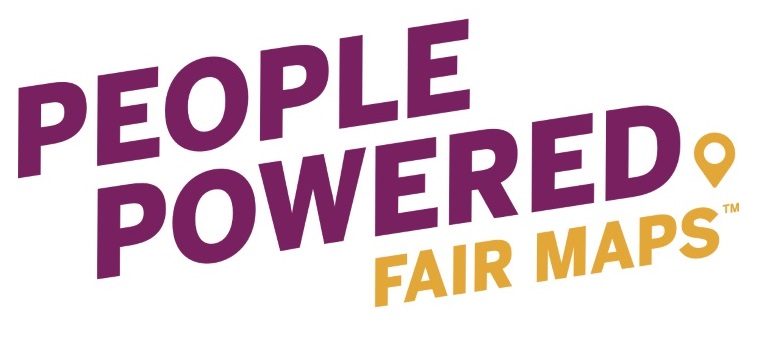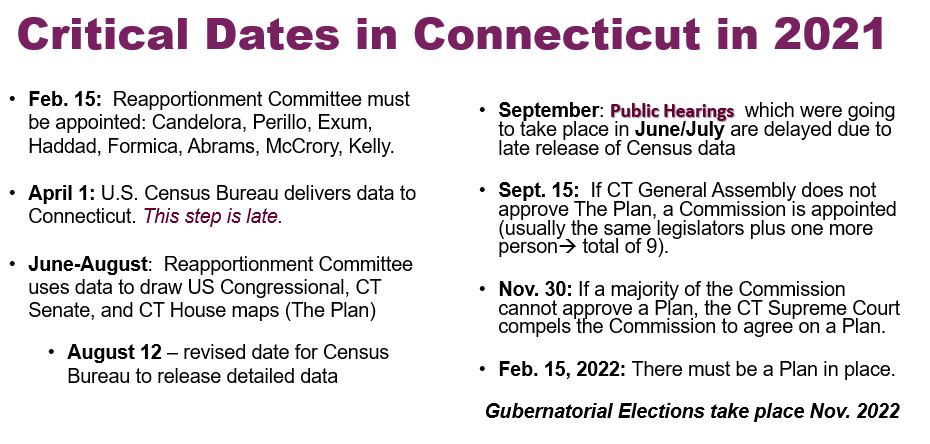
August 6, 2021
Who draws the district maps and how is it done?
In the first blog post of this series, I addressed the “why” of Redistricting. That is, why federal and state legislative districts must be of substantially equal population size and thus must be assessed/adjusted every ten years following the results of the latest Census. In this post, I focus on who draws the maps, what processes are in place to resolve impasses, and how public engagement and process transparency are ensured. Additionally, we’ll take a look at the California Independent Redistricting Commission, as independent non-politician commissions are the approach favored by the League of Women Voters. See the 2020 League of Women Voters Impact on Issues and People Powered Fair Maps© page for more.
Along with our coalition partners, the League believes that legislators should not construct the districts in which they will or may seek elected office. Instead, district maps should be developed by non-partisan commissions, in the open, and with public engagement and input.
The Connecticut Redistricting Process
In Connecticut, as in many other states, the elected Legislature is responsible for Redistricting. Connecticut’s framework for Redistricting is embedded in the state Constitution, which specifies that following the decennial Census, the Legislature must appoint a Reapportionment Committee (RC) made up of four House and four Senate members evenly split between the Majority and Minority parties. This Committee uses data from the Census to redraw the districts. Districts must be drawn to follow federal standards and state districts must be contiguous. The resultant maps must be approved by September 15th by a Supermajority vote of two-thirds of each house. If the maps fail to achieve the required two-third vote by September 15th, a nine member Commission responsible for map drawing is appointed by the Governor. This Commission is made up of the eight members of the legislature evenly divided between Majority and Minority parties as well as one state elector (voter). Should the Commission’s map plan fail to gain the support of at least 5 Commission members, the Connecticut Supreme Court becomes the entity to produce results. This is accomplished either by “…compel[ling] the commission, by mandamus or otherwise, to perform its duty or to correct any error made in its plan of districting…” or by producing the maps itself. For more, see All About Redistricting.
|
The members of the Reapportionment Committee this 2021 cycle are State House Representatives Candelora (District 86), Perillo (District 113), Exum (District 19) and Haddad (District 54) and Senators Formica (District 20), Abrams (District 13), McCrory (District 2) and Kelly (District 21). |
LWVCT has summarized Connecticut’s process and timeline as follows:

Results of the Redistricting process in CT
While attending the April 26th organizing meeting for this year’s Reapportionment Committee (RC), I learned that Connecticut legislators are proud of our state's bipartisan Redistricting process. I learned that the decennial committee has a collegial tradition of rotating the chairs of the RC between parties regardless of which party is in the majority.
This of course does not mean that our state’s process has been successful. We need to review past cycles and ask: at what stage during the process have maps successfully been produced? As the National Conference of State Legislatures summarizes about Connecticut, “Since 1981, the legislature has been unable to redistrict by the state’s constitutional deadline…” . In other words, legislators have been unable to agree to a map plan approved by a two-third vote of the members of each house by the constitutional deadline. In the most recent 2010 cycle, Congressional districts were ultimately drawn by a court-appointed special master in early 2012. State House and Senate legislative district maps in that same cycle were adopted in late 2011 by the backup Commission that had been seated once the legislators failed to approve proposed maps by the September 15th deadline.
Approaches to ensure transparency and public engagement
And what of the conditions of openness to the public and engagement with the public? What does the Constitution specify in that regard? The answer is simple. There are no requirements for transparency and public engagement specified in the state Constitution or in the statutory authority cited as part of the legal authority for Redistricting. As the Princeton Gerrymandering Project summarizes: “While no public hearings are currently required under Connecticut law, the Reapportionment Committee held six public hearings across all five congressional districts in July 2011. It is plausible that there will be similar opportunities for public input in 2021.”
The Reapportionment Committee has said that public hearings will be scheduled after Census data has been released. The Committee notes that the necessary Census data is delayed this cycle and is now expected on August 12. Thus, currently there are no proposed maps to which the public may react. It should be noted that this delay in receipt of data has not stopped other states from moving forward with public hearings.
During the 2021 Connecticut General Assembly session, the legislature passed a bill to end the practice called “prison gerrymandering”. The Governor signed the bill into law on May 26, 2021. Incarcerated persons will now be counted for purposes of redistricting in their home communities rather than as residents of the town where the prison facility is located. LWVCT worked in coalition with the NAACP, ACLU and others to end the practice of prison gerrymandering.
An Independent Redistricting Commission Example - California
The League of Women Voters supports the establishment of non-partisan independent Redistricting Commissions that are inclusive of the diversity of the districts they assess and map. See the the LWVUS Impact on Issues 2020-2022, p. 35.
Six states use non-politician Redistricting Commissions for Congressional districts. Those six are joined by three more states in using non-politician commissions for state legislative districts. See Ballotpedia's article on Redistricting Commissions for more.
As an example, in 2008 “California voters passed the Voters FIRST Act, authorizing the creation of the Independent Citizens Redistricting Commission to draw new state legislative district lines, taking the job out of the hands of the California Legislature and transferring it to the citizens." In 2010, California voters added responsibility for drawing Congressional districts to the citizens’ commission.
A brief examination of California’s Redistricting Commission’s website reveals a sharp contrast with that of Connecticut and helps us see the kinds of actions that can be taken to bring state residents into the Redistricting process. The Commission’s FAQ document provides an excellent outline of questions and answers, summarizing the substance and process of Redistricting in California. The homepage of the Commission’s website shows three phases of the Redistricting process starting in January with outreach to citizens and communities. The main difference between the states of California and Connecticut is that the California approach is public-centric and the Connecticut approach is elected and appointed officials-centric.
Summary
Connecticut’s Redistricting process is largely a game of “insider ball”. This is unavoidable to some extent until the Connecticut Constitution is amended to remove elected officials from the central role they play. However, it would be possible for the decennial Connecticut Reapportionment Committee to develop and implement a public education and outreach program to wrap around the current process and generate more public knowledge about this important but little known subject. In the current reality, legislators can correctly point to a lack of public interest even though they themselves are well-positioned to help overcome that gap.
In my next blog, we will look I will take a look at more criteria used to draw maps.
Action you can take today:
Write to your Congressional and state Representatives and Senators even if your state representatives are not on the Reapportionment Committee. Tell them you want them to reach out to their constituents about the Redistricting process in Connecticut. Ask them to hold a Town Hall (it can be virtual) to learn about community concerns. Make sure you copy the Reapportionment Committee on any email you send: Reapportionment [at] cga.ct.gov.
Additional information:
- Loyola Law School - All About Redistricting
- Ballotpedia - Redistricting
- California Redistricting Commission - We Draw the Lines CA
- Connecticut Reapportionment Committee - 2021 Redistrictig Project
- National Conference of State Legislators - Redistricting Research Page